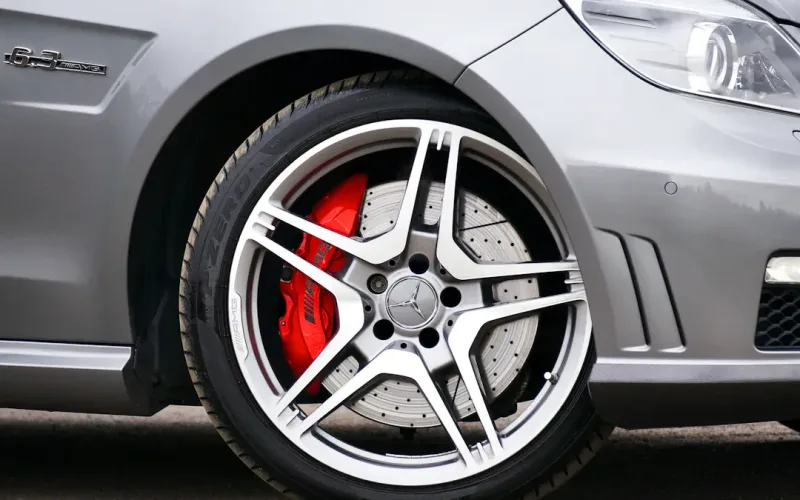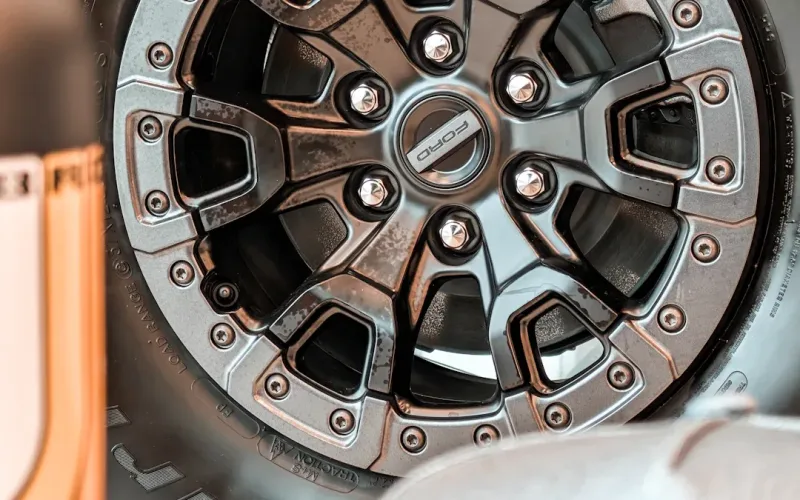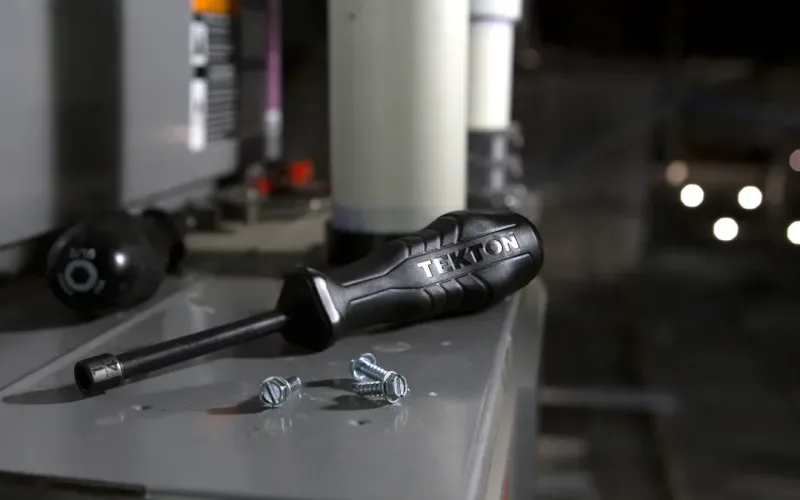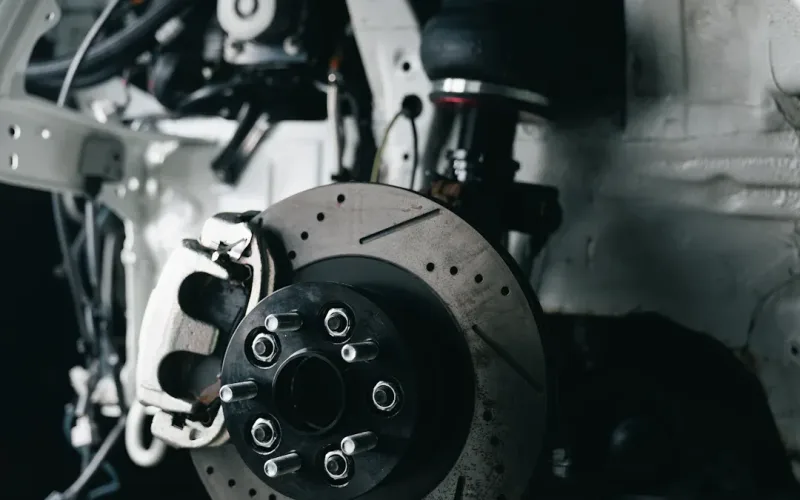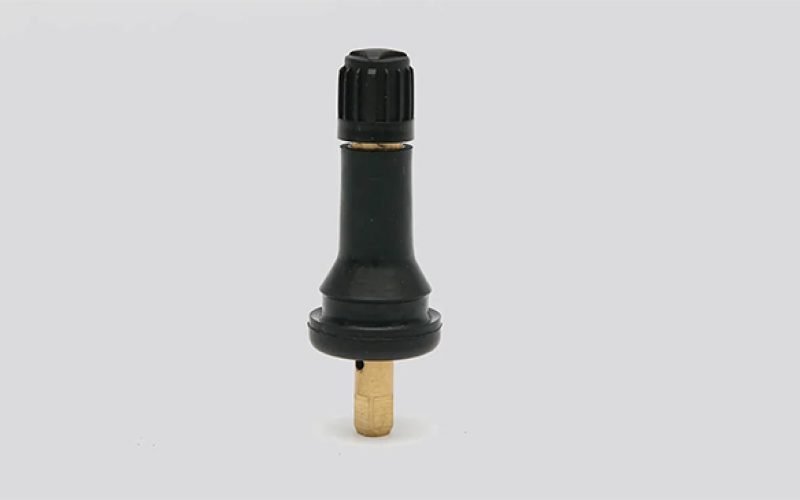

admin1
August 28, 2025
Schrader Stem Essentials for Bikes, Cars, and More
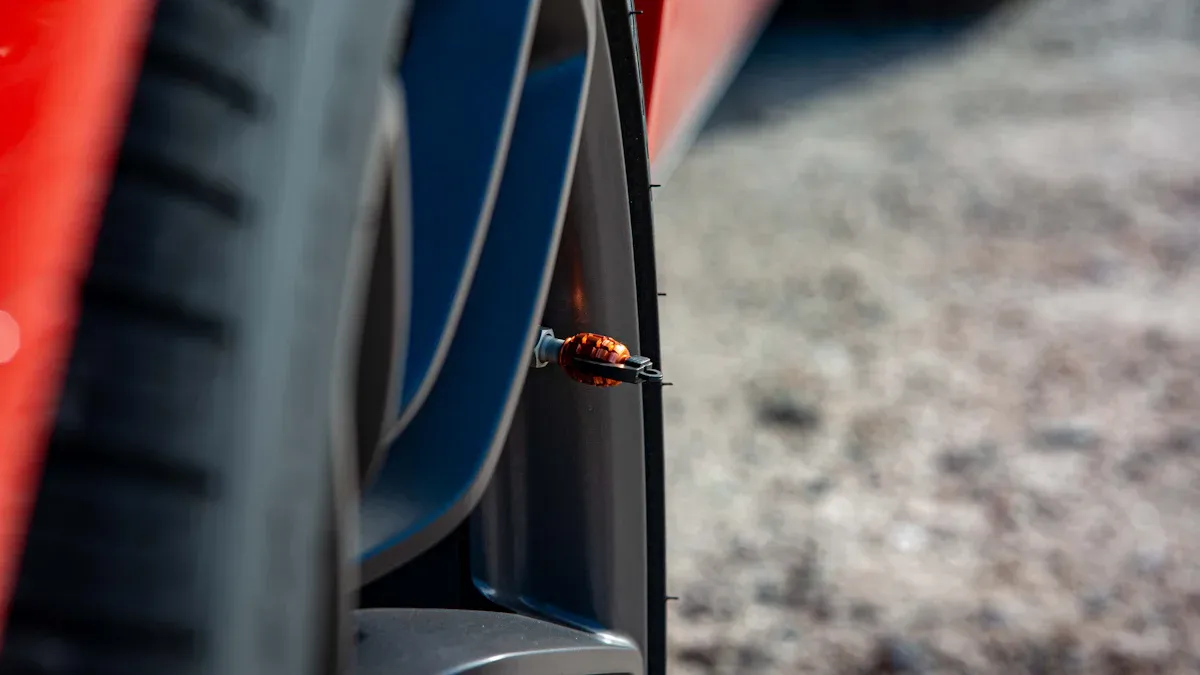
You rely on a Schrader stem every time you check or inflate your tires. This small part plays a big role in safety for cars and bicycles. The automotive industry depends on high-quality Schrader valve cores to keep tire pressure stable and support tire pressure monitoring systems. These features help you stay safe on the road. Schrader stems remain the top choice for inner tube use because they fit most rims and make inflation easy. Most bikes, cars, and trucks use an inner tube with a Schrader stem for reliable performance.
The market for automotive Schrader stems is growing fast.
Segment Market Size (2024) Projected Size (2034) CAGR (%) Automotive USD 500 million USD 1 billion 7.5
Inner tube applications benefit from the strong seal and easy maintenance offered by Schrader stems. You get dependable air retention and simple repairs, making them a smart choice for everyday use.
Understanding the Schrader Stem
What Makes a Schrader Valve Unique?
You might wonder why the Schrader valve stands out among other tire valves. Its design has made it the standard for cars and many bicycles. The Schrader valve was patented in 1893, just as pneumatic tires became popular for both bicycles and automobiles. This innovation changed tire technology and set the stage for modern transportation. The design has stayed almost the same since then, showing how effective it is.
Here are some features that make the Schrader valve unique:
- Wide shaft, usually 36-40mm long, which gives it strength and durability.
- Removable valve core with a spring-loaded mechanism for easy inflation and deflation.
- Sometimes fully threaded or covered with a rubber sleeve for a better fit.
- Known by names like “car type valve,” “auto valve,” or “fat valve.”
- Offers robustness, simple use, and low cost.
Note: The Schrader valve became the standard because it works well and lasts a long time. You can find it on almost every car and many bikes today.
Key Components and How They Work
You will find that the Schrader valve uses a simple but clever mechanism. Inside the valve, a spring-loaded poppet opens when you press down, letting air move in or out. When you stop pressing, the spring closes the valve, which keeps the air sealed inside your tire. This design helps you keep the right tire pressure and makes inflating or checking your tires easy.
The history of the Schrader valve shows its importance. In the early 1890s, George H. F. Schrader designed the first tire valve for bicycles. By 1892, he had a patent for a valve for pneumatic tires. In 1898, the design improved with a replaceable core. These steps helped the Schrader valve become the top choice for cars, bikes, and many other vehicles.
Schrader Valve Stem Types
When you look at the different schrader valve stem types, you see how each design meets specific needs for vehicles and equipment. You can choose from standard rubber schrader valve stems, metal schrader valve stems, and high-pressure schrader valve stems. Each type offers unique features for safety, durability, and performance.
Standard Rubber Schrader Stems
Standard rubber schrader valve stems are the most common choice for everyday vehicles. You find these stems on most passenger cars, bicycles, and light trucks. The rubber construction gives you flexibility and a tight seal against the rim. You can install them easily, and they work well for moderate pressure levels.
Here is a table that shows how rubber stems compare to metal schrader valve stems:
| Feature | Rubber Valve Stems | Metal Valve Stems (Aluminum/Brass) |
|---|---|---|
| Durability | Prone to degradation from UV, ozone, and chemicals | More durable and resistant to corrosion |
| Cost | Cost-effective and flexible | Generally more expensive |
| Applications | Standard passenger vehicles | High-performance, off-road, and commercial vehicles |
| Pressure Ratings | Lower pressure ratings | Higher pressure ratings |
| Temperature Resistance | Less suitable for extreme temperatures | Suitable for extreme temperatures |
You get a cost-effective solution with standard rubber schrader valve stems. These stems work best for vehicles that do not face extreme conditions. You should check them regularly for cracks or wear, especially if your vehicle sits outside in the sun.
Metal Schrader Stems
Metal schrader valve stems give you extra strength and durability. You see these stems on high-performance cars, off-road vehicles, and commercial trucks. The metal construction resists corrosion and stands up to harsh environments. You can use them in places with high temperatures or where you need higher pressure ratings.
Metal schrader valve stems come in aluminum or brass. You get a stiffer and sturdier stem that lasts longer than rubber. Many metal stems feature a removable valve core, which makes maintenance easier. Some designs include a sealed aluminum cap with integrated tools for valve core removal and air bleeding. You also find a large stem ring nut for better grip and a lower profile base for easier tire installation.
Here is a table that highlights features of a popular metal schrader valve stem:
| Feature | Description |
|---|---|
| Type | Jones Spec. Schrader Valve Stem |
| Length | 36.5 mm |
| Weight | 24 g (pair) |
| Diameter | Larger than presta valves for increased airflow |
| Material | Aluminum with a smooth, rounded, lower profile base |
| Valve Core | Removable and replaceable |
| Cap | Sealed aluminum with integrated tools for valve core removal and air bleeding |
| Compatibility | Fits 8 mm rim hole, works with Jones aluminum and carbon rims and wheelsets |
| Advantages | Stiffer, sturdier, easier to use than presta valves, faster/higher volume airflow, no clogging |
| Additional Features | Large stem ring nut for better grip, lower profile base for easier tire installation |
You should choose metal schrader valve stems if you need reliability in tough conditions. These stems handle higher pressures and last longer, making them ideal for demanding applications.
High-Pressure Schrader Valve Stems
High-pressure schrader valve stems are designed for commercial vehicles and heavy-duty trucks. You need these stems when your tires require higher air pressure for safe operation. Most high-pressure schrader valve stems use metal construction to withstand extreme conditions.
You find these stems rated for up to 200 psi. Truck tire valves can handle the maximum tire pressure molded into the tire sidewall. You get peace of mind knowing your tire valve stem will not fail under heavy loads.
- High-pressure schrader valve stems for commercial vehicles are typically rated at 200 psi.
- Heavy-duty trucks use metal valve stems with similar pressure ratings.
- Truck tire valves can handle the maximum tire pressure molded into the tire sidewall.
You should use high-pressure schrader valve stems for vehicles that carry heavy loads or operate in demanding environments. These stems offer the strength and reliability you need for safety and performance.
TPMS-Compatible Schrader Valve Stems
You see tire pressure monitoring systems (TPMS) in most modern cars and trucks. These systems help you stay safe by alerting you when tire pressure drops. TPMS-compatible schrader valve stems play a key role in making these systems work. You need these special valve stems if your vehicle uses TPMS sensors.
TPMS-compatible schrader valve stems have a unique design. You find a metal body that resists corrosion and supports the sensor. The stem holds the TPMS sensor in place inside the wheel. You get a secure fit that prevents leaks and keeps the sensor working. Most TPMS-compatible schrader valve stems use high-quality materials like brass or aluminum. These metals last longer and handle tough road conditions.
You should know that not all valve stems work with TPMS. Standard rubber schrader valve stems do not support the sensor. You must use TPMS-compatible schrader valve stems to avoid sensor damage or air leaks. You can spot these stems by their metal construction and threaded ends. Some models include a special grommet or washer to seal the sensor.
Here is a table that shows the main features of TPMS-compatible schrader valve stems:
| Feature | Description |
|---|---|
| Material | Brass or aluminum |
| Sensor Support | Holds TPMS sensor securely |
| Pressure Rating | Up to 200 psi |
| Corrosion Resistance | High |
| Seal Type | Grommet or washer for airtight seal |
| Compatibility | Works with most OEM and aftermarket TPMS sensors |
You get several benefits when you use TPMS-compatible schrader valve stems:
- You keep your TPMS sensors working.
- You prevent air leaks and keep tire pressure stable.
- You avoid costly repairs from sensor damage.
Tip: Always check your vehicle manual before replacing valve stems. You need to match the stem type with your TPMS system for best results.
You find TPMS-compatible schrader valve stems in many schrader valve stem types. Most metal schrader valve stems support TPMS sensors. You should choose these stems if you want reliable performance and long-lasting protection for your tires and sensors.
Specialty Schrader Stems for Off-Road, Industrial, and Lawn Equipment
You use specialty schrader stems when you need extra strength and durability. Off-road vehicles, industrial machines, and lawn equipment face tough conditions. You need valve stems that can handle mud, rocks, chemicals, and heavy loads.
Specialty schrader stems come in many forms. You see high-pressure schrader valve stems on construction trucks and farm equipment. These stems handle up to 200 psi and resist bending or breaking. You find metal schrader valve stems on ATVs and off-road trucks. These stems use thick brass or aluminum for extra toughness.
You also see unique designs for lawn mowers and garden tractors. Some stems have short bodies for small wheels. Others use reinforced rubber to resist cuts and punctures. You get a tight seal that keeps air in, even when you drive over rough ground.
Here is a list of common specialty schrader stems:
- High-pressure schrader valve stems for dump trucks and loaders.
- Metal schrader valve stems for ATVs and off-road vehicles.
- Short rubber stems for lawn equipment.
- Chemical-resistant stems for industrial machines.
You should pick the right stem for your equipment. Look for pressure ratings, material type, and stem length. You get better safety and longer life when you match the stem to your needs.
Note: Specialty schrader stems help you avoid downtime and costly repairs. You keep your equipment running smoothly by choosing the right valve stem.
You find many schrader valve stem types for specialty uses. Most high-pressure schrader valve stems use metal construction. You get strong performance in harsh environments. You should check your equipment manual or ask a professional before buying new stems.
Applications of Schrader Stems Across Vehicles
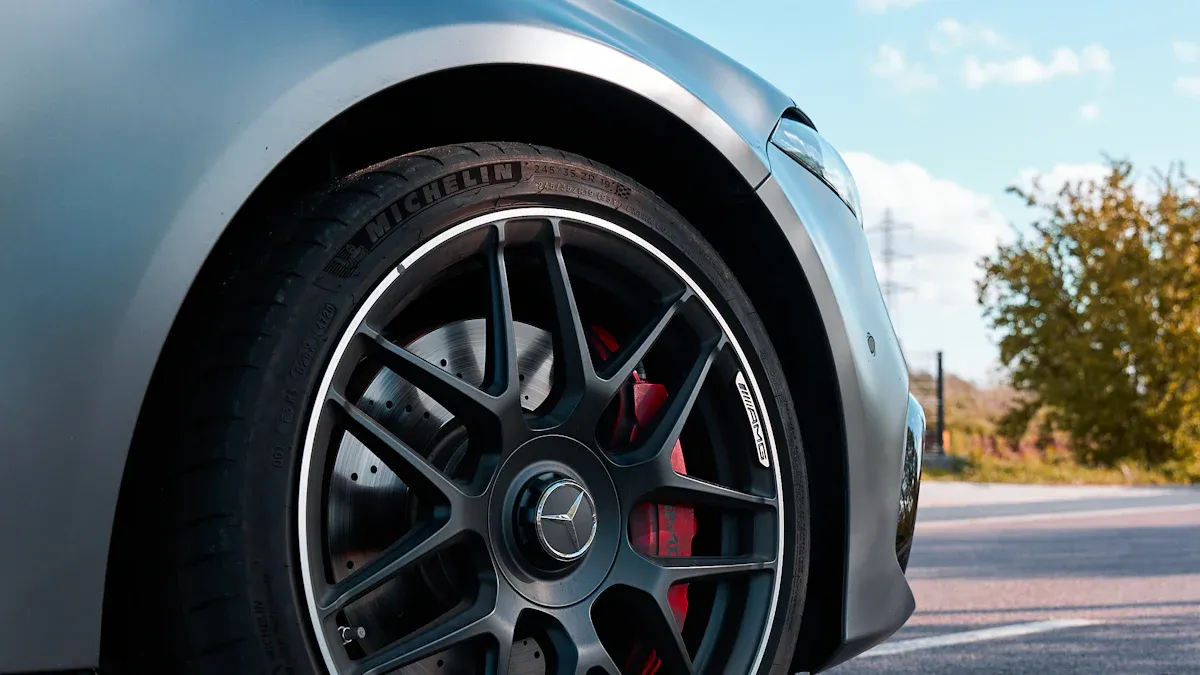
Schrader Stems for Bicycles and Inner Tube Use
You see the schrader stem on many bicycles and motorcycles today. Jones Bikes switched from Presta to schrader valves for all their bikes and wheels. This change shows a growing trend in the bicycle category. You use a schrader valve stem for easy inflation with a standard pump. The inner tube fits most rims and works well for mountain and hybrid bikes. You get reliable air retention for moderate pressure, usually between 30–70 PSI. The inner tube with a schrader stem is strong and resists damage on rough terrain. You find it easy to repair or replace the tube if needed.
| Schrader Valve Pros | Schrader Valve Cons |
|---|---|
| Easy to Inflate | Lower Pressure Limit |
| Durable | Heavier |
| Universal Compatibility | Requires Larger Rim Hole |
You use the inner tube in a bicycle tyre for everyday riding. The schrader valve stem uses a larger rim hole, which may not suit lightweight racing bikes. You get a dependable seal for tubeless setups, but you should check for leaks often. The inner tube remains the most popular choice for casual riders.
Schrader Stems for Cars and Light Trucks
You rely on the schrader stem for automotive and passenger vehicles. The standard rubber schrader valve stems fit most car and truck tyres. You use the inner tube in older vehicles, but most modern cars use tubeless tyres. The schrader valve stem uses a removable core, making cleaning and maintenance simple. You get quick inflation and easy pressure checks with any pump. The metal schrader valve stems offer extra durability for tubeless setups. You find these stems in both OEM and aftermarket tyre valve stem kits. The inner tube is less common now, but you still see it in some light trucks.
- Compatible with a wide range of pumps
- Easier to add air due to larger valve size
- Removable core for cleaning
You get cost-effective performance for everyday driving. The schrader valve stem uses a design that supports TPMS sensors in modern vehicles.
Schrader Stems for Heavy-Duty and Commercial Vehicles
You need high-pressure schrader valve stems for heavy-duty trucks and commercial vehicles. The inner tube in these tyres must handle high loads and tough conditions. You use metal schrader valve stems for extra strength and resistance to corrosion. The inner tube supports pressures up to 200 PSI, making it ideal for dump trucks and loaders. You find tubeless tyres with schrader valve stem uses in construction and industrial machines. The tube in these tyres must withstand chemicals and rough terrain. You get a secure seal and long-lasting performance with high-pressure schrader valve stems. The metal schrader valve stems work well for tubeless setups in commercial fleets.
- High-pressure schrader valve stems for trucks and industrial equipment
- Metal schrader valve stems for durability and reliability
- Inner tube for heavy-duty applications
You keep your fleet running smoothly by choosing the right schrader stem for each tyre and tube.
Other Uses: ATVs, Lawn Equipment, and Specialty Vehicles
You use the inner tube and schrader valve in many vehicles beyond cars and trucks. All-terrain vehicles (ATVs), lawn mowers, and specialty vehicles depend on these parts for safe and smooth operation. When you ride an ATV, you need a strong inner tube inside each tyre. The tube helps the tyre keep its shape and protects it from sharp rocks or sticks. Most ATVs use a tubeless tyre, but some models still need an inner tube for extra support on rough trails.
Lawn equipment, like mowers and garden tractors, often uses an inner tube in each tyre. You find this setup helpful because it makes repairs easy. If you get a flat, you can replace the tube without changing the whole tyre. Many lawn tyres have a tubeless design, but an inner tube can help if the rim or tyre has a small leak. You keep your equipment running longer by checking the tube and tyre for damage.
Specialty vehicles, such as golf carts and utility carts, also use the inner tube and tubeless tyre systems. You see these vehicles on farms, golf courses, and factories. The inner tube gives you a simple way to fix flats and keep the tyre pressure steady. Some specialty vehicles use a tubeless tyre for better performance, but an inner tube can add extra safety if you drive over rough ground.
Here is a quick list of where you find inner tube and tubeless tyre setups:
- ATVs: Inner tube for backup, tubeless tyre for main use
- Lawn mowers: Inner tube for easy repair, tubeless tyre for new models
- Golf carts: Inner tube for older tyres, tubeless tyre for smoother rides
- Utility vehicles: Inner tube for heavy loads, tubeless tyre for durability
Tip: Always check your tyre and tube before each use. You avoid flats and keep your equipment safe.
You also see the schrader valve on many of these vehicles, just like on a bicycle. The valve lets you add air to the inner tube or tubeless tyre quickly. You save time and keep your tyres ready for work or play.
Choosing the Right Schrader Valve Stem
Size and Fitment Considerations
When you select a schrader stem for your vehicle, you need to pay close attention to size and fitment. The right size ensures a proper fit and keeps your tires safe. You should check the diameter of the rim hole, which varies depending on your vehicle type. Most passenger cars use an 8 mm rim hole, while trucks and specialty vehicles may require larger sizes. Valve stem lengths also matter. Shorter stems work well for smaller wheels, such as those on lawn equipment, while longer stems suit deeper rims found on trucks or off-road vehicles.
You must also consider the angle of the valve stem. Some wheels need straight stems, while others require angled stems for easier access. Pressure ratings play a role in fitment, especially if your vehicle uses a tire pressure monitoring system (TPMS). The stem must match the rim and tire to prevent air leaks and extend tire life.
Tip: Always check your vehicle manual or consult a professional before choosing a tire valve stem. Using the correct size and fitment helps you avoid air leaks and keeps your tires in good condition.
- Valve stem lengths, angles, and rim hole diameters are critical for compatibility.
- Proper fitment maintains air retention and improves tire longevity.
- The diameter of the rim hole is especially important for safety.
Material Choices: Rubber vs. Metal
You face a choice between rubber and metal when picking a schrader valve stem. Each material offers unique benefits and affects long-term maintenance costs. Rubber stems are easy to install and maintain. You can replace them quickly, which makes them popular for standard passenger vehicles and bicycles. However, rubber stems may need to be replaced every time you change a tire. This can lead to higher cumulative costs over time.
Metal stems provide greater durability and resist corrosion. You do not need to replace metal stems with every tire change, which can lower your long-term expenses. Metal stems last longer, but you must check them regularly for signs of corrosion. If you neglect maintenance, corrosion can increase costs. Metal stems work best for high-performance, commercial, or off-road vehicles.
- Metal valve stems last longer and reduce replacement frequency.
- Rubber valve stems are easier to install but may require more frequent replacement.
- Metal stems do not need replacement with every tire change, making them cost-effective.
- Rubber stems usually need replacement each time you change a tire, increasing maintenance costs.
Note: Choose metal stems for durability and long-term savings. Pick rubber stems for easy installation and lower upfront costs.
Pressure Ratings and Durability
Pressure ratings help you decide which schrader valve stem suits your needs. You must match the stem’s pressure rating to your vehicle’s requirements. Using a stem with the correct rating ensures safety and prevents damage. The table below shows common pressure ranges and their applications:
| Pressure Range | Application Description |
|---|---|
| Low Pressure (0.5 – 2.5 bar) | Suitable for bicycles and some motorcycles with low tire pressure. |
| Standard Pressure (2.5 – 6 bar) | Commonly used for motorcycles, ATVs, and light-duty vehicles, balancing durability and performance. |
| High Pressure (6 – 12 bar) | Designed for passenger cars, light trucks, and SUVs, capable of withstanding higher pressures. |
| Heavy-Duty (12 – 20 bar) | Built for commercial vehicles and off-road applications, ensuring durability in rugged conditions. |
You should always check the pressure ratings before installing a new schrader valve. Low-pressure stems work for bicycles and motorcycles. Standard pressure stems fit ATVs and light-duty vehicles. High-pressure stems are best for passenger cars and trucks. Heavy-duty stems handle commercial vehicles and off-road equipment.
Schrader valve stems with higher pressure ratings use stronger materials and construction. You get better durability and longer service life. Matching the pressure rating to your vehicle keeps your tires safe and helps you avoid costly repairs.
Reminder: Always use a schrader valve stem with the correct pressure rating for your vehicle. This protects your tires and ensures reliable performance.
Compatibility with Rims, Tire Types, and TPMS Systems
You need to match your valve stem with your rim, tire type, and any tire pressure monitoring system (TPMS) your vehicle uses. This step helps you avoid leaks, sensor errors, and tire damage. You can find many rim designs, so you must check the rim hole size before choosing a valve stem. Most passenger cars use an 8 mm rim hole, but trucks and specialty vehicles may need larger sizes. You should measure the rim hole with a caliper for accuracy.
You see different tire types on the market. Tubeless tires do not use an inner tube. The valve stem seals directly against the rim. Inner tube tires need a stem that fits both the tube and the rim. You must pick a stem that matches your tire type. Tubeless setups often use metal stems for better sealing and durability. Inner tube tires work well with rubber stems.
TPMS systems help you monitor tire pressure. Many modern vehicles use TPMS sensors inside the wheel. These sensors need a compatible valve stem. TPMS-compatible stems have a metal body and a special seal. You must use these stems if your vehicle has TPMS. If you use the wrong stem, you risk damaging the sensor or causing air leaks.
Here is a table to help you choose the right stem for your setup:
| Rim Type | Tire Type | TPMS System | Recommended Stem Type |
|---|---|---|---|
| Standard Alloy | Tubeless | Yes | Metal TPMS-Compatible |
| Steel | Tubeless | No | Rubber or Metal |
| Off-Road | Inner Tube | No | Rubber Specialty |
| Commercial Truck | Tubeless | Yes | High-Pressure Metal TPMS |
| Lawn Equipment | Inner Tube | No | Short Rubber |
Tip: Always check your vehicle manual for rim and tire specifications. You avoid mistakes by matching the stem to your rim, tire, and TPMS system.
You get universal compatibility when you choose a schrader valve stem. This design fits most rims and tire types. You can use the same pump for bikes, cars, and trucks. Schrader stems work with many TPMS systems, making them a smart choice for modern vehicles.
You should inspect your valve stem during every tire change. Look for cracks, corrosion, or worn seals. Replace the stem if you see any damage. You keep your tires safe and your TPMS working by using the right stem for your setup.
Installation and Maintenance of Schrader Stems

How to Install a Schrader Valve Stem
You can install a schrader stem in automotive and passenger vehicles by following a step-by-step process. This ensures a secure air seal and reliable air retention for your inner tube or tubeless tire. Here is a simple guide:
- Remove the tire from the vehicle using a lug wrench.
- Deflate the tire completely with a tire deflator tool.
- Break the bead between the tire and rim using a bead breaker.
- Remove the old tire valve stem with a removal tool.
- Slide the correct size rubber grommet onto the new stem, making sure the widest part sits at the base.
- Push the stem through the rim hole so the grommet fits tightly.
- Place the washer on the stem body, beveled side up.
- Screw on the nut, rounded side on top, and tighten to 25-45 inch pounds with a torque wrench.
- Re-seat the tire bead onto the rim.
- Inflate the tire to the recommended pressure ratings using a pump.
- Reinstall the tire and tighten the lug nuts.
- Lower the vehicle and finish tightening the lug nuts with a torque wrench.
This process helps you maintain the durable construction of your schrader valve and inner tube, ensuring long-lasting performance.
Routine Maintenance Tips
You keep your tube and tire valve stem working well by following regular maintenance. These tips help you extend the life of your inner tube and maintain reliable air retention:
- Inspect valve stems for cracks, hairline fractures, or discoloration during every service.
- Clean the stem and tube area with a damp cloth to remove dirt and debris.
- Use valve caps to protect against dust and moisture, making sure they fit snugly.
- Flex the stem gently to check for leaks or damage.
- Avoid overtightening the replaceable valve core when reinstalling.
- Handle tire pressure checks with care to prevent damage.
- Include valve stem and tube checks in routine tire maintenance visits.
These steps help you keep your automotive tires and inner tube in top condition.
Troubleshooting Common Issues
You may notice air leaks or problems with your tube or schrader stem. Here are common troubleshooting methods:
- Replace the schrader valve and O-ring if you find leaks.
- Reseat the valve by loosening and retightening it several times.
- Use a valve removal tool to replace the inner schrader valve.
- Check for cracks or aging materials in the tube and stem.
- Inspect for heat damage or excessive valve movement in high-mileage vehicles.
| Cause | Explanation |
|---|---|
| High Mileage and Wear | Valve stem seals wear out from constant motion and exposure to heat and oil. |
| Heat Damage | High temperatures harden and crack seals, reducing effectiveness. |
| Incorrect Installation | Improperly seated seals can lead to leaks and early failure. |
| Aging Materials | Over time, seals lose elasticity and develop cracks. |
You solve most issues by replacing damaged parts and checking the tube and stem regularly. This keeps your inner tube and schrader stem working with a secure air seal and reliable air retention.
Practical Tips for Everyday Use of Schrader Stems
Checking for Leaks and Wear
You keep your tyres safe by checking the valve stems often. Every month, inspect each stem for cracks or stiffness when you check the tread. Always make sure a cap covers the stem to keep it clean and dry. If you see dirt or moisture, wipe the area with a cloth. You can spot leaks by listening for a hissing sound or using soapy water around the stem. Bubbles show you where air escapes. This method works for both inner tube and tubeless setups. If you use an inner tube, check the tube for soft spots or bulges. Tubeless tyres need extra attention at the rim and stem area. A pump helps you test for slow leaks by inflating the tyre and watching for pressure drops.
Tip: Apply a light coat of silicone-based lubricant to the rubber part of each valve stem once a year. This helps prevent cracking and keeps the stem flexible.
Extending Valve Stem Life
You can make your valve stems last longer with simple steps. Always use a valve cap to block dust and water. Clean the stem and tube area during every tyre service. For inner tube setups, avoid bending the stem when you inflate the tube. If you use tubeless tyres, check the seal between the rim and stem. A replaceable valve core lets you fix leaks without changing the whole stem. You should store your bike or car away from direct sunlight to protect the rubber. For lawn equipment, inspect the tube and stem before each use. Tubeless setups benefit from regular cleaning at the rim and stem junction.
| Maintenance Step | Benefit |
|---|---|
| Use valve caps | Blocks dirt and moisture |
| Clean stem and tube | Prevents buildup |
| Lubricate stem annually | Reduces cracking |
| Check rim seal | Stops slow leaks |
When to Replace Your Schrader Stem
You need to replace your valve stem if you notice certain warning signs. Persistent loss of tyre pressure means the stem or tube may leak. If you see corrosion or physical damage on the stem, replace it right away. Unusual vibrations or your vehicle pulling to one side can signal a faulty stem or inner tube. For tubeless setups, inspect the stem seal and replace it if you find cracks. Always change the stem when you install a new inner tube or switch to tubeless tyres. If you use a replaceable valve core, swap it out if you see air escaping after tightening.
- Persistent loss of tyre pressure
- Visible damage or corrosion on the stem
- Unusual vibrations or pulling to one side
Note: Regular checks and timely replacement keep your tyres, tube, and tubeless setup working safely.
Quick-Reference Checklist for Schrader Stem Selection and Maintenance
Schrader Stem Selection Guide
You want to choose the right stem for your tyre. Start by checking the rim hole size. Most passenger cars use an 8 mm hole. Trucks and lawn equipment may need a larger size. Measure the stem length. Short stems fit small wheels. Long stems work for deep rims. Look at the material. Rubber stems suit everyday tyres. Metal stems last longer and resist corrosion. Match the pressure rating to your tyre. High-pressure stems fit trucks and commercial vehicles. Standard stems work for bicycles and light-duty cars. If your vehicle uses a TPMS sensor, pick a stem that supports it. TPMS-compatible stems have a metal body and special seals.
Here is a quick checklist for selection:
- Check rim hole diameter and stem length.
- Choose rubber or metal based on your needs.
- Match pressure rating to your tyre type.
- Confirm TPMS compatibility if needed.
- Inspect for specialty requirements, such as off-road or lawn equipment.
Tip: Always read your vehicle manual before buying a new stem. This helps you avoid leaks and keeps your tyre safe.
Maintenance and Safety Reminders
You keep your tyre and stem working well with regular checks. Inspect the stem for cracks or bends every month. Replace the stem if you see damage or if it feels stiff. Test for leaks by applying soapy water around the stem. Bubbles mean you need to replace the schrader valve. Always use a cap to protect the valve from dirt and moisture. Check the O-rings for cracks or wear. Replace them if you find any damage.
The table below shows common maintenance reminders:
| Component | Maintenance Reminder |
|---|---|
| Valve Stem | Routinely replaced, also replaced if bent or binding |
| Schrader Valve | Replaced if bubbles form during leak testing (caps required) |
| O-Rings | Routinely replaced, also replaced when damage is discovered (cracked or worn) |
You help your tyre last longer by following these steps. Clean the stem area during every tyre service. Store your vehicle away from direct sunlight to protect rubber stems. Replace the stem when you install a new tyre or inner tube.
Note: Regular maintenance keeps your tyre safe and helps you avoid unexpected flats.
You play a key role in keeping your vehicle safe by choosing the right schrader stem. Picking the correct schrader valve prevents sudden air loss and costly repairs. Always match the pressure rating to your tire and install the stem properly to avoid dangerous situations. Using a quick-reference checklist helps you spot problems early and maintain top performance.
| Benefit | Description |
|---|---|
| Protects Valve Components | Early checks prevent damage and extend service life. |
| Maintains Sealing Performance | Timely replacements keep valves tight and reliable. |
| Prevents Pressure Fluctuations | Routine inspections stop leaks and pressure spikes. |
Stay proactive with regular checks and use your checklist for every maintenance session.
FAQ
What is the main difference between Schrader and Presta valves?
You see Schrader valves on cars and most bikes. Presta valves appear on road bikes. Schrader valves use a wider stem and a spring-loaded core. Presta valves use a slimmer design and a manual lock nut. Schrader valves fit standard pumps.
How often should you replace a Schrader valve stem?
You should replace the valve stem every time you install a new tire. If you notice cracks, leaks, or corrosion, change the stem right away. Regular checks help you avoid sudden air loss and keep your tires safe.
Can you use a Schrader stem with tubeless tires?
You can use Schrader stems with tubeless tires. Metal Schrader stems work best for tubeless setups. They provide a strong seal and resist corrosion. Always check the rim and stem compatibility before installation.
Why do TPMS systems need special Schrader valve stems?
TPMS systems require metal Schrader stems with a secure seal. These stems hold the sensor in place and prevent leaks. Using the correct stem keeps your TPMS working and protects your sensor from damage.
How do you check for leaks in a Schrader valve stem?
You can check for leaks by applying soapy water around the valve stem. If you see bubbles, air escapes from the stem. Listen for a hissing sound. Replace the stem if you find a leak.

